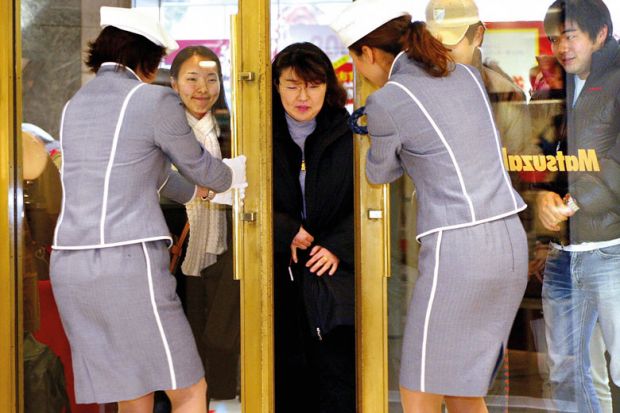Some of Japan’s national institutions have begun to introduce quotas to increase the number of female students they admit, signalling a broader shift by public universities, which have previously refrained from using such measures.
This year, female applicants sitting exams for the Tokyo Institute of Technology (Tokyo Tech) – among Japan’s most prestigious universities, where women previously made up 13 per cent of bachelor’s students – will be reserved a certain number of spots in its various schools, with the aim of ensuring that they make up 20 per cent of total student numbers admitted.
The policy comes amid a larger national push to encourage more women into STEM fields, as the government mulls subsidies to incentivise universities to produce more science graduates. Last autumn, officials announced Japan’s intention to raise the number of STEM students from 35 to 50 per cent, with education and science minister Keiko Nagaoka explicitly addressing the shortage of women in the area and pledging to “overturn the gender bias” preventing more women from choosing sciences.
According to The Japan Times, Tokyo Tech is among several national institutions, including Nagoya University, Shimane University and the University of Toyama, to have recently put quotas in place.
According to a 2019 survey, only 7 per cent of female university students in Japan major in science and engineering, the smallest share among member economies of the Organisation for Economic Co-operation and Development.
Ginko Kawano, a professor of sociology of education and an adviser for promoting gender equality at Yamagata University, said that although policies favouring women were likely to increase the number of female students majoring in STEM fields, it was “uncertain whether all universities applying for [government grants] will introduce quotas for women”.
She noted that entrance examinations for a small number of engineering departments in private institutions such as Daido University had “long” been using quotas to encourage more female applicants.
Nevertheless, she said, quotas would not be a “fundamental solution” to the problem, which she noted begins early on with high-school students divided into groups according to whether they choose to study humanities or sciences.
“Most high schools make students choose,” she said. “You can imagine easily what happens…even boys who are not good at subjects in science courses choose science courses because it is cool for boys and secure for future jobs.”
Masami Iwata, a Japanese sociologist and professor emeritus at Japan Women’s University, noted a 2018 incident in which Tokyo Medical University was condemned for favouring male applicants in admissions, deducting points from women who applied.
“Considering this, the current attempt could be considered groundbreaking,” she said.
But she said she was sceptical that the efforts were driven from within academia; rather, they stemmed from pragmatism, Professor Iwata said.
“Since it is limited to STEM fields, it is probably due to a strong demand from industry rather than for women,” she added.
Akira Mori, a professor at the Research Center for Advanced Science and Technology, University of Tokyo, said he shared the scepticism, though he attributed the changes to “increasing demands from other nations” putting pressure on the country to improve.
“Japan is not good in terms of gender issues. I am not sure how much senior male politicians are serious about these issues,” he said.
Even so, he said he believed the intention was well placed: “If this is truly realised, this means not only an increase in the number but also indicates that our society has finally started to help people who are under-represented or who are busy with family and so on.”
Register to continue
Why register?
- Registration is free and only takes a moment
- Once registered, you can read 3 articles a month
- Sign up for our newsletter
Subscribe
Or subscribe for unlimited access to:
- Unlimited access to news, views, insights & reviews
- Digital editions
- Digital access to THE’s university and college rankings analysis
Already registered or a current subscriber? Login








